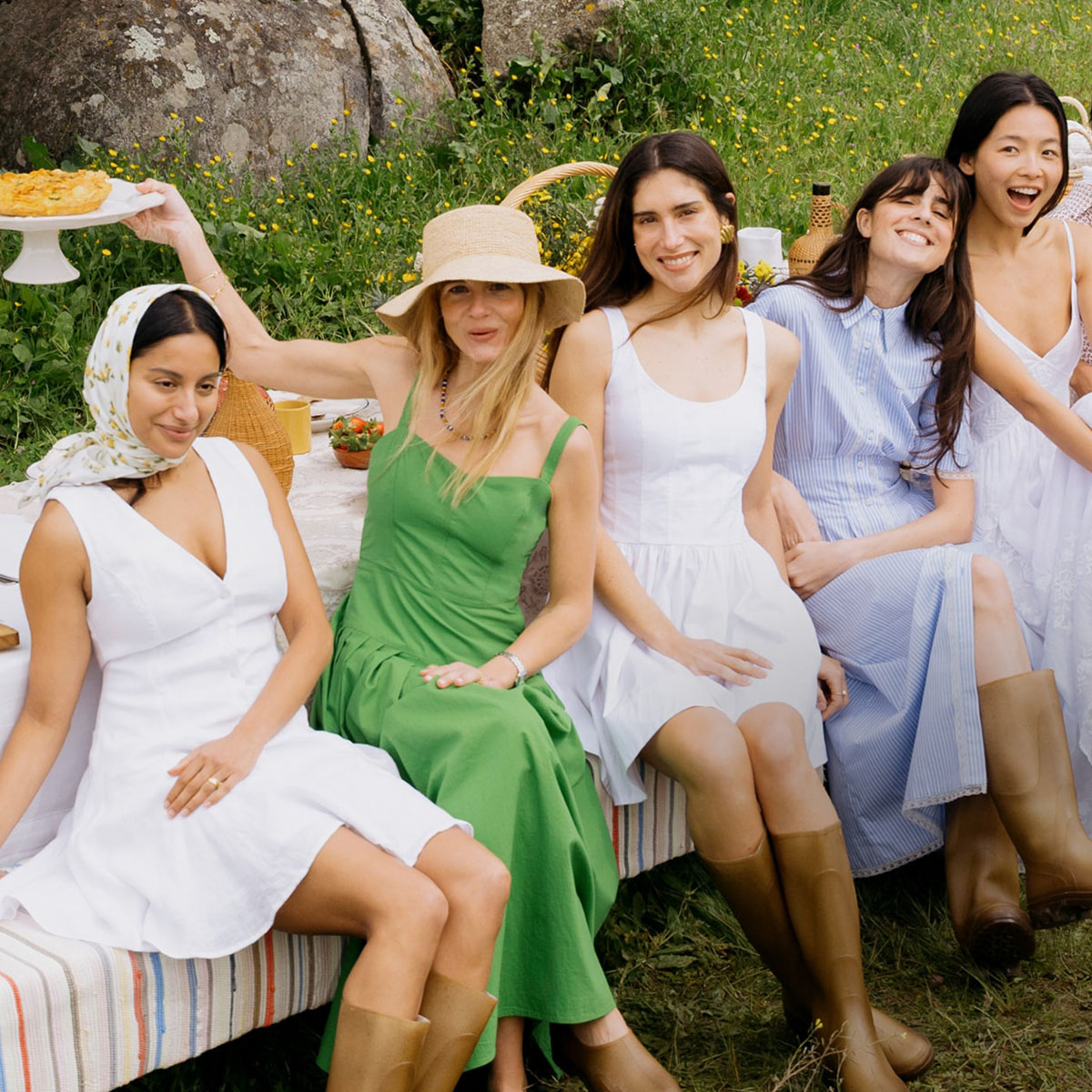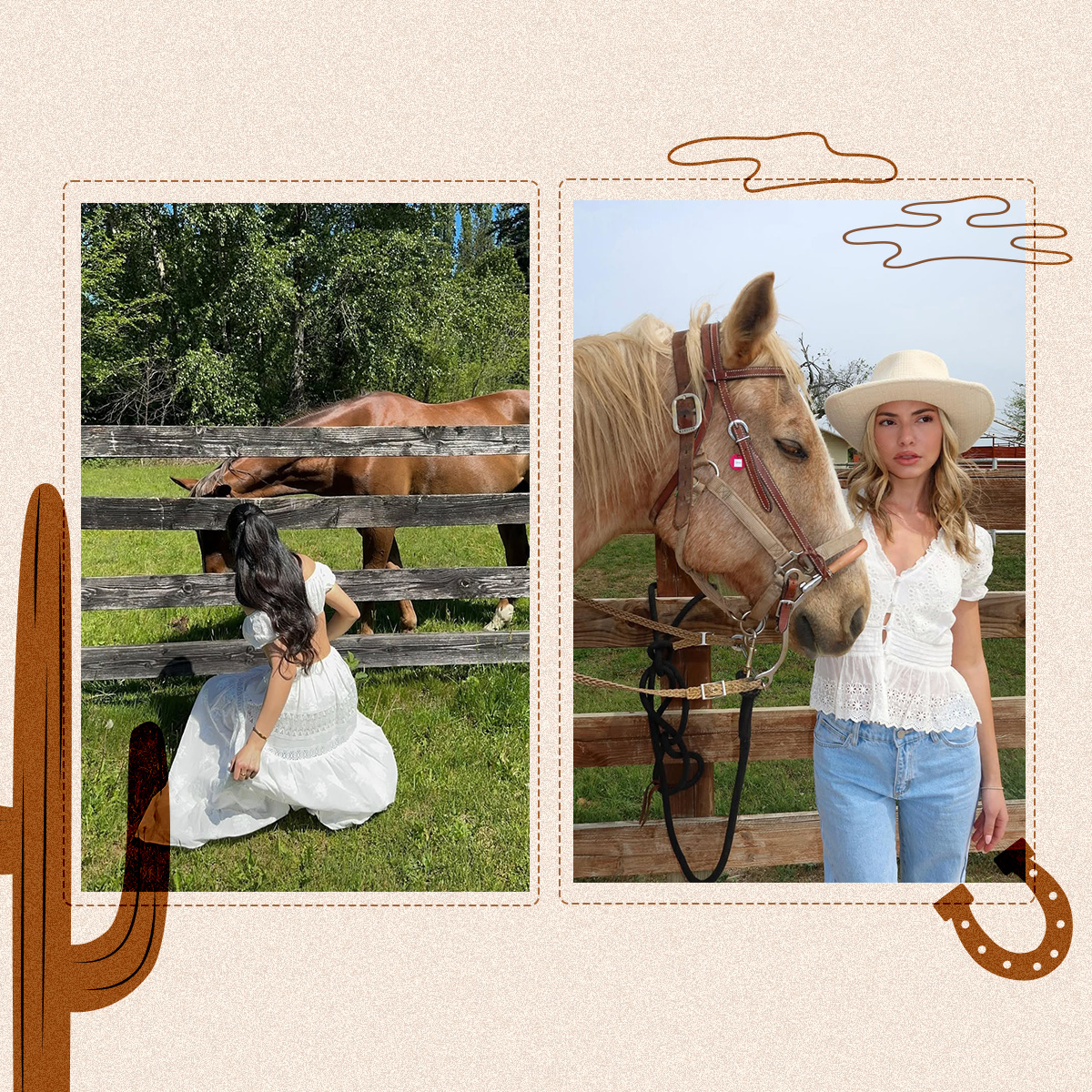Everything You Want to Know About the Mary Queen of Scots Costumes
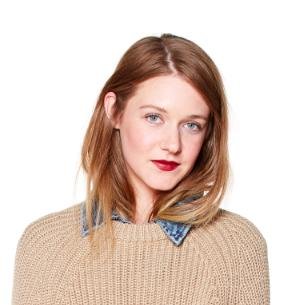
This month Josie Rourke made her feature film directorial debut with Mary Queen of Scots starring Saoirse Ronan as Mary and Margot Robbie as Queen Elizabeth. The story is a visually captivating experience that retells the turbulent story of Mary Stuart. For those who need a brief history refresher, Stuart was born a Catholic in Scotland at a time of religious tension and was sent to live in France. She married the heir to the throne at 15, became queen at 16, but was widowed at 18. Rather than remarrying, she returned to Scotland to reclaim the throne despite the Protestants gaining control. Her cousin Queen Elizabeth faced pressure to marry and produce an heir to the English throne. To make things all the more tumultuous (that's how it goes with monarchs, right?), Mary had a rival claim to Elizabeth's throne. Pretty juicy stuff, and though there's so much more we could say about the film's story, we're focusing on one component that we find particularly enthralling: the costumes.
We had the immense pleasure of speaking with the film's Oscar-winning costume designer Alexandra Byrne. She grew up in Stratford-upon-Avon (yes, Shakespeare's hometown) and has worked on Elizabethean films before; she won an Oscar for her work on Elizabeth: The Golden Age. Continue scrolling to hear about Byrne's creative process and decisions for the film and to see images of Robbie and Ronan in their roles.
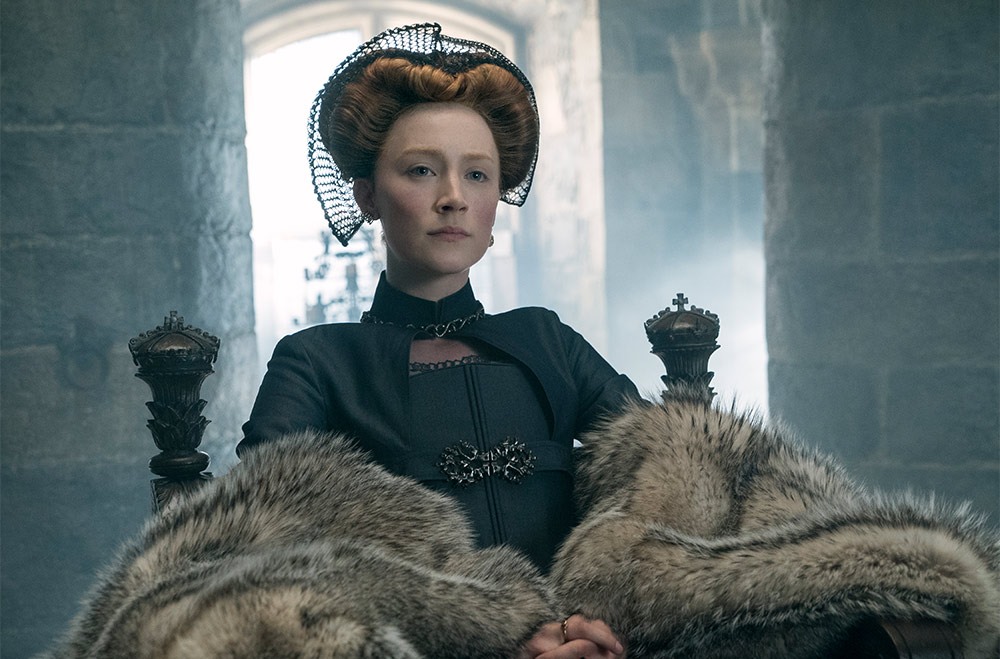
On her process of research before a film:
"For any film, I always do my research," Byrne begins. "With a period like this, you need to know and understand the history, the social history, what was going on in the world, and what the world for these women was." Mary Queen of Scots is very much a story about women—two women in a male-dominated world fighting to maintain power and control.
"My job as a costume designer is to help tell the story visually, and I think you can only make good decisions if you have this kind of background of knowledge so you're then making informed choices from that."
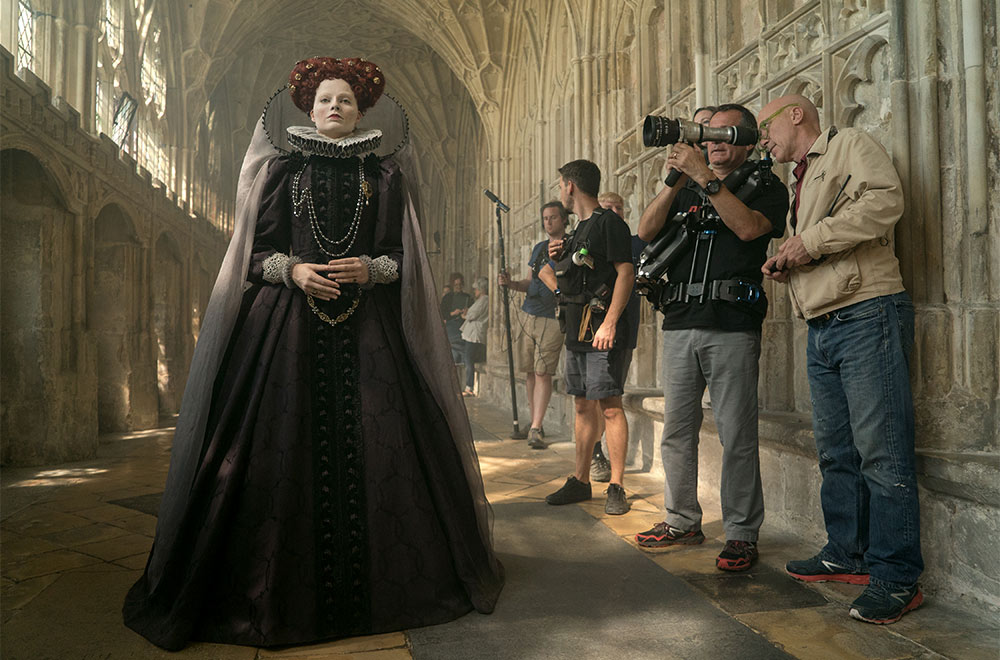
On using all-denim for the costumes:
The movie was filmed in Scotland and Byrne anticipated the weather posing a risk to the wardrobe and thus decided that they had to make everything (rather than rent). "They didn't have dry cleaners back then," she laughs. "They would've gotten wet in their clothes, the sun would’ve dried them, they would've sweated in them. I think they would've become quite molded to the body, which is difficult when you're making costumes."
This led her to the idea of using denim. "When you take off your favorite pair of jeans, they don't lay flat; they’ve got a sculpture to them. I wanted the clothes to have that life and belonging. If I limited the fabrics I was using, then I could manipulate a fabric to tell the story."
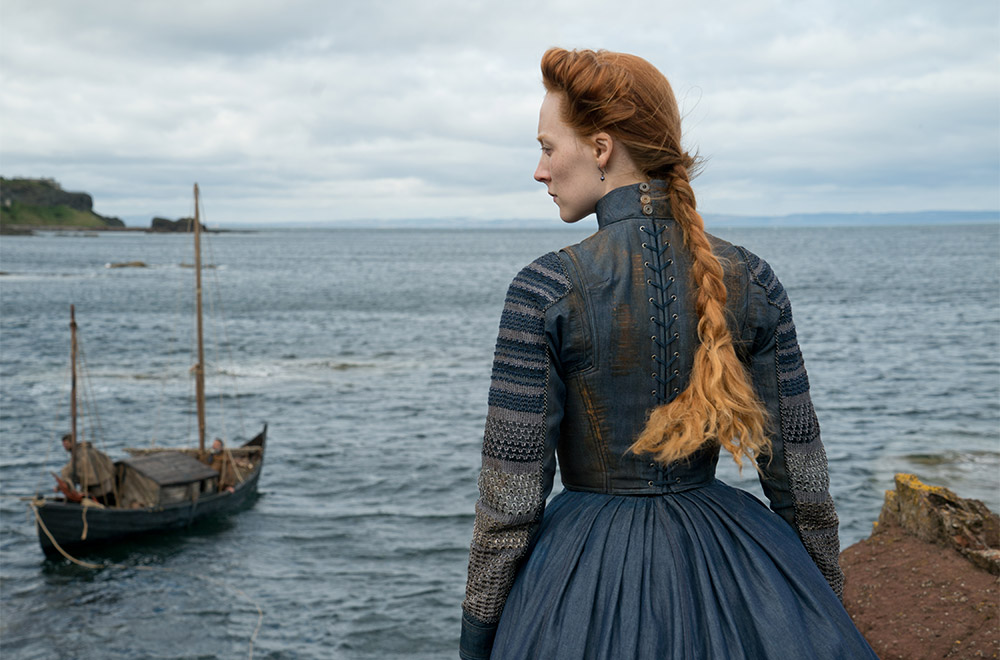
On her use of color to tell the story of Mary and Elizabeth:
Throughout the film, the two queens' costumes go through a transformation of color, which was very much a strategic decision on Byrne's behalf. When Mary returns to Scotland, "She came back as a widow. She’d been stripped of her title her jewels and her lifestyle. I wanted to reflect that in her clothes," Byrne says. She's in a pale dress kneeling on the beach vomiting into the surf and the indigo of her petticoat starts to bleed through and stain her clothing. "That's the beginning of her transition into the indigo."
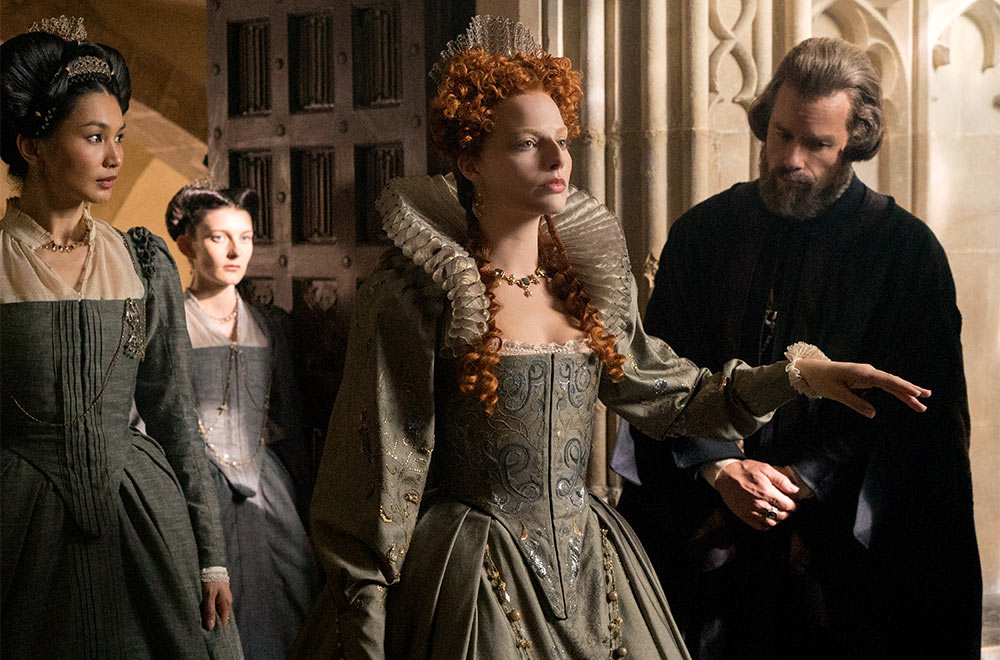
On the iconography of Queen Elizabeth:
"She was very well educated and loved to be strategic from an early age," Byrne says in reference to Elizabeth. "She understood the power of her image to replace the iconography of the Virgin Mary and was incredibly aware of the power of her appearance." In the earlier part of the film, Byrne dressed Robbie in a separate elaborate look for each appearance, but once the queen becomes ill with smallpox her, appearance takes a sharp turn. "That's when I took the colors out and desaturated her."
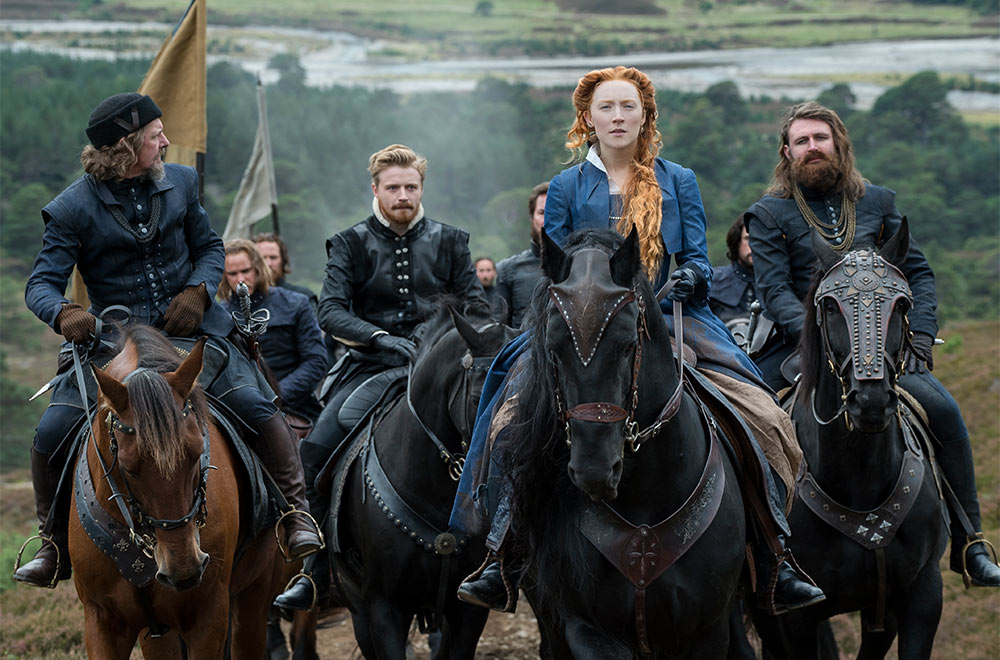
On making the men "sexy":
"Having done this period before, I knew how daunted the men were by the Elizabethan era and so the challenge was to make the men sexy," Byrne quips. The transformation of the actors once they put on and worked in the denim was "a very rewarding journey. They all felt quite strong and good in their clothes," she says.
Interested in costume design? Pick up a copy of the Costume Designer's Handbook to get started.

Nicole Kliest is a freelance writer and editor based in New York City who focuses on fashion, travel, food, wine, and pretty much anything else that's amusing to write about. After graduating from Pepperdine University with a bachelor's in journalism and creative writing, she started her career back in 2010 as Who What Wear's photo editor and throughout the last decade has contributed to publications including Fashionista, Harper's Bazaar, Elle, The Zoe Report, PopSugar, Fodor's Travel, and several others. She also copywrites and has worked with clients such as Frame, Sea, 3x1, Intelligentsia, and others to develop brand voices through storytelling and creative marketing. She's very passionate about the ways we can improve our sustainability efforts in the fashion industry as well as cultivating content that's diverse and inclusive of all people. When she's not checking out the latest restaurant opening in her West Village neighborhood or riding her bicycle along the West Side Highway, she can be found scheming her next trip somewhere around the world. (Up next is Vienna.)
